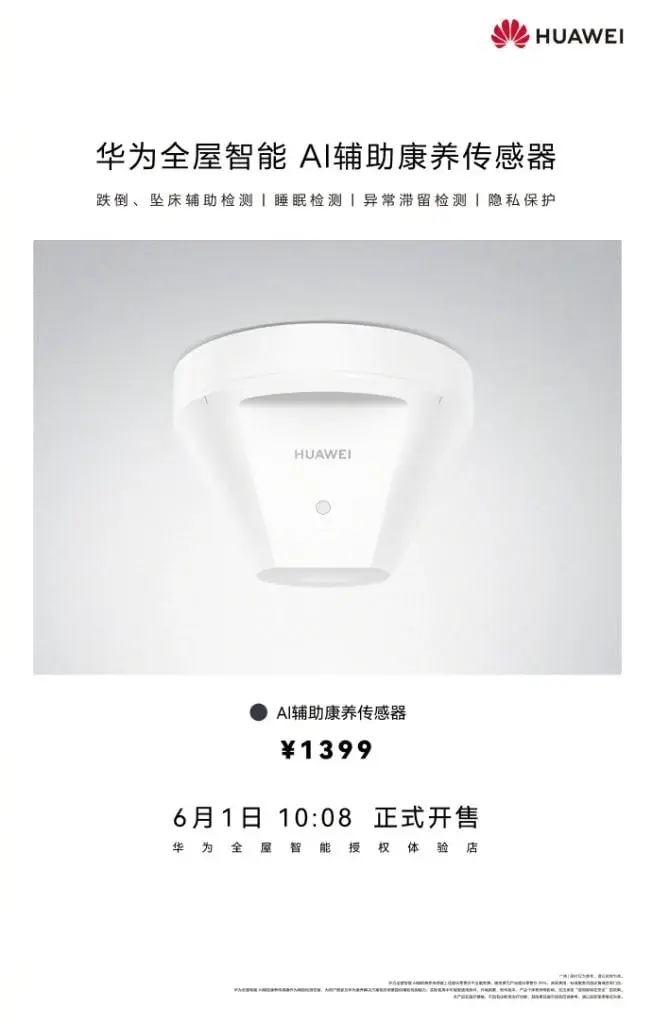Huawei has introduced a smart home device that leverages millimeter-wave radar technology to monitor health and well-being. Priced at 1399 yuan (approximately $196), this AI-assisted health sensor comes packed with features designed to provide safety and comfort within your home.
Huawei Whole-house Smart AI-Assisted Health Sensor Specifications
The device can detect falls, bed falls, and sleep patterns. It accurately identifies human posture, location, and respiratory rate, offering reassurance for those concerned about elderly family members or looking to improve their sleep quality.
A standout feature is fall detection. The sensor can differentiate between falls in various rooms, such as bathrooms and bedrooms, and sends alerts through multiple channels (phone calls, SMS, and push notifications) to designated contacts. This feature ensures timely assistance during emergencies.
Comprehensive Monitoring & Sleep Analysis
Beyond fall detection, the sensor keeps track of sleep patterns and prolonged absences from bed, potentially flagging health issues. Users can set sleep schedules and get alerts if an elderly person sleeps unusually long or wakes up at odd times.
The sensor integrates effortlessly with Huawei’s smart home solutions. It has micro-motion perception capabilities, enabling precise detection of human presence even during minimal movements like breathing. This facilitates automatic light adjustments based on room occupancy, promoting a comfortable and energy-efficient living space.
Precision and Privacy
The sensor effectively filters out interference from objects like robotic vacuums to ensure accurate detection, thereby minimizing false alarms. Huawei emphasizes user privacy; the millimeter-wave radar technology ensures no images or sounds are captured, making it a secure option for home installation.
However, it’s important to highlight that the sensor is an auxiliary detection device and cannot guarantee complete safety. It is not a medical device and cannot diagnose or treat medical conditions.
With a maximum coverage area of 25 square meters (269 square feet), the sensor is currently designed for single-person detection. Huawei cautions against using the sensor in homes with pets, as their movements might lead to false alarms.



Leave a Reply